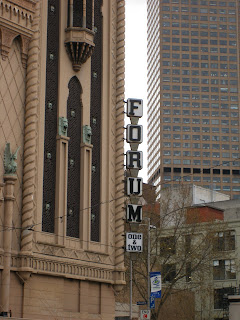Alvin Langdon Coburn
Born in Boston on the 11th of June 1882 Coburn received his first camera in 1890 when he was aged 8 and began his venture into photography expressing his artistic ability. Coburn was renowned for his cityscape's of New York, London and Venice and his portraits of famous American figures such as George Bernard Shaw, Henry James and William Butler Yeats.
Although his photographs were ‘distinguished by his exploring originality of approach,’ Coburn was the first to demonstrate abstract photographs in 1917 when he invented a kaleidoscope- like instrument with three mirrors clasped together which was able to fit over the lens of a camera and reflect and fracture the image. Coburn called this style of photography ‘Vortographs’, which was extremely important in the development of formalism and modernism in photography.
The reason for the change from his original pictorial movement to a more abstract cubism imaging was his involvement in a group who called themselves Vorticists. The group was made up of photographers including Wyndham Lewis, Henri Gaudier-Brzeska, Charles Nevinson and William Roberts. In a journal, Blast, written in 1914-15, Lewis attacked the sentimentality of 19th Century art and emphasized the value of violence, energy and the machine. “In the visual arts Vorticim was expressed in abstract compositions of bold lines, sharp angles and plans.” It was during this time that Coburn began experimenting with vortographs. Coburn created his images using a variety of printing techniques such as gravure, gum and platinum. Gravure printing is characteristically used for long run, high quality printing producing a sharp, fine image which involves engraving the image onto a copper cylinder. Gum Bichromate printing is created by permanently applying pigment to paper by using a photochemical reaction on most occasions several layers of colour pigment would have been applied to the one print. Platinum prints are photographic prints made by a monochrome printing process that provides the greatest tonal range of any printing method using chemical development. A majority of Coburn's works were published in Camera Works- the exquisite fine art photographic magazine which was edited and produced by Alfred Stieglitz from 1905-1917.
In 1907, George Bernard Shaw considered Coburn, who at the time was 24 years old, the greatest photographer in the world.
Quotes
- “Photography teaches its devotees how to look intelligently and appreciatively at the world…”
- “Why should not the camera artist break away from the worn out conventions… and claim the freedom of expression which any art must have to be alive.”
When looking at his images:
OLD
- Soft focus lens
- Romantic
- Misty
- Reminiscent
NEW

- Dynamic arrangement of forms
- Pound argues how Coburn’s Vortography leaps beyond
the‘stale and suburban’ style of pictorialism
- - Freed the camera from the representation of reality
- Brought photography on par with modern abstract painting
Information thanks to;Also a special thank you to Google Images and Wikipedia

















 This image was taken at the Pixar convention. I like the size difference between the cars and the light globe; people automatically recognise this as the lamp that introduces the beginning of the movie. (Thank you Pixar)
This image was taken at the Pixar convention. I like the size difference between the cars and the light globe; people automatically recognise this as the lamp that introduces the beginning of the movie. (Thank you Pixar)
